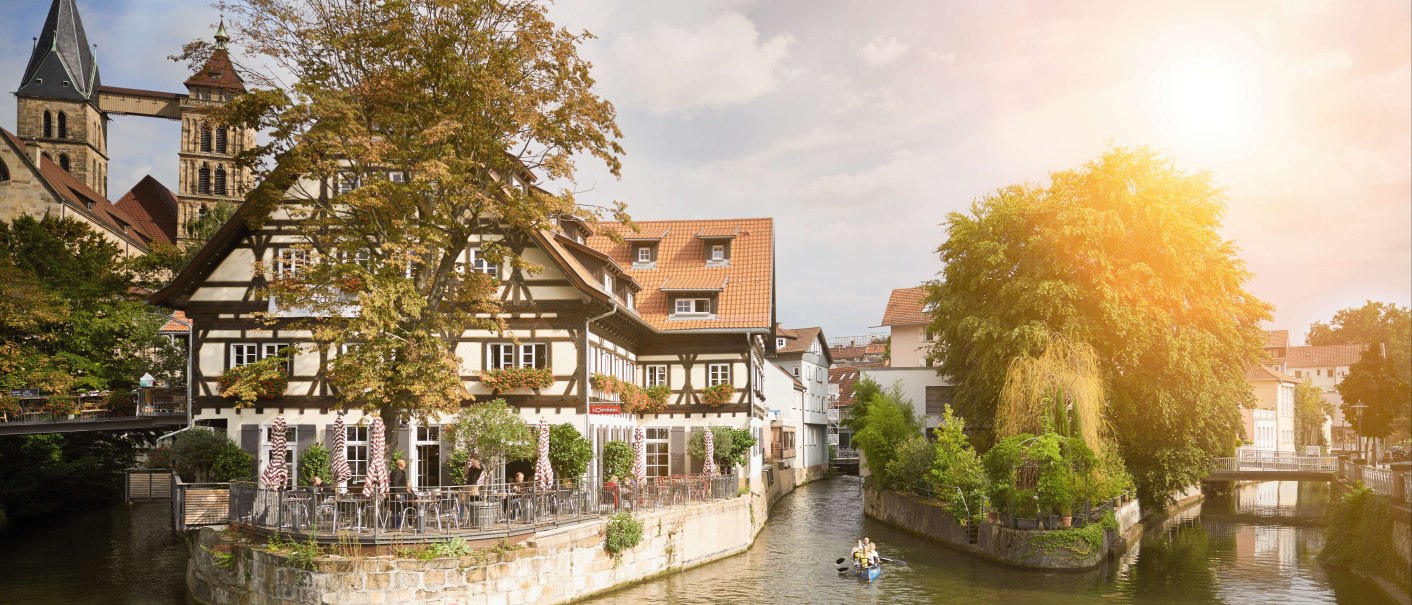Esslingen am Neckar
The former free imperial city of Esslingen am Neckar is embedded in the Neckar valley and surrounded by vineyards. The city looks back at a history of more than 1200 years and is quickly moving into the 21st century.
History
Founding of the city more than 1200 years ago. First mentioned in the testament of the abbot Fulrad from St. Denis near Paris. In 777 he bequeathed his cell over the Neckar - called "Hetsilinga" in a document from 866 - to his monastery St. Denis near Paris in the case of his death. The name Esslingen comes from the time of the Alemanni and goes back to the tribe of the Ezzelinge, to the people of a certain Azzilo or Hetsilo.
At the time of the Staufens, Esslingen on the Neckar experienced its first and probably also the greatest heyday of its history. In this time the city became a free imperial city and was only subject to the emperor. The Staufen period also characterizes the image of the city, in the 13th and 14th century important buildings like the city church, the Church of Our Lady, the Dominican and Franciscan Church and many monasteries, gates, towers and administrative buildings. Esslingen on the Neckar appears for the first time as a city in a document from the year 1219.
In this time also warlike confrontations with the neighboring Wuerttembergers took place. When emperor Heinrich VII went to war against the Wuerttemberg count Eberhardt I in the years 1310 - 1313, Esslingen on the Neckar played a decisive role. The Esslingers destroyed the Wuerttemberg burial place in Beutelsbach and burned down the clan's fortress on the Witemberg, today Rotenberg.
At the beginning of the 19th century, Esslingen on the Neckar became a part of Wuerttemberg. And then the age of the industry began. However, the city also gained a name as the "cradle" of the sports and leisure time movements. Famous sons of the city like Karl Pfaff founded the German and Swabian Singing Society. The attorney Theodor Georgii helped the German Gymnastics Association to grow up, and two further Esslingers, Valentin Salzmann and Ernst Camerer were the "fathers" of the Swabian Alp Association - today the largest German hiking club.
During the Second World War, Esslingen on the Neckar remained vastly spared from heavy attacks. After the war, numerous new city districts sprang up on the slopes above the Neckar valley. The historical city core was restored in an exemplary manner.

